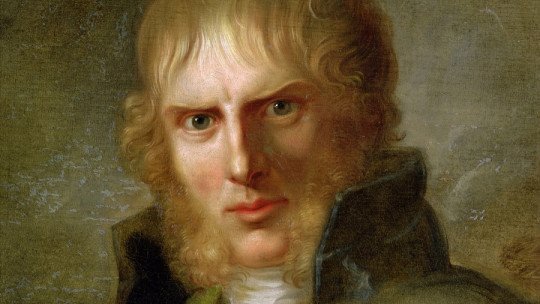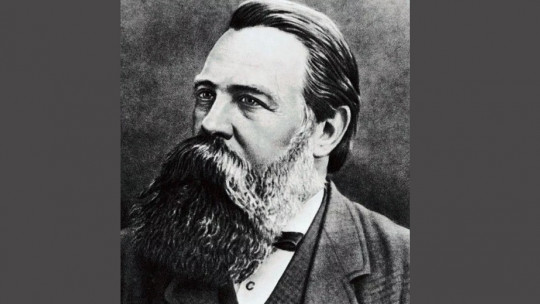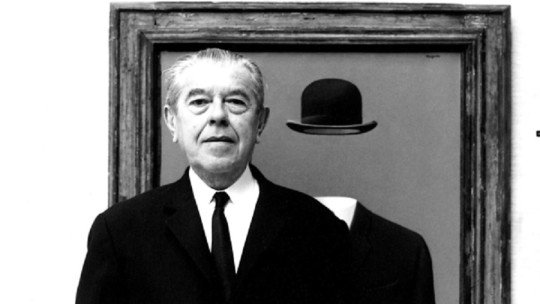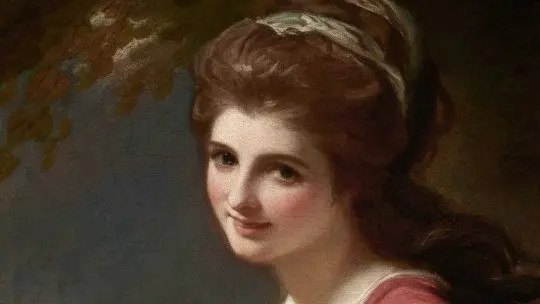Norbert Wolf collects in his book dedicated to Friedrich the impression that the romantic painter had on one of his visitors, the Russian poet Vasili Andreyevich Shukowski, who said of him that, although his landscapes seemed to reveal a melancholic person, this image did not correspond with reality.
Although we can believe that Caspar David Friedrich was not permanently in the typical state of romantic despondency, we cannot fully trust Shukowski’s opinion either, since we know from some of his contemporaries that the painter attempted suicide on some occasion and that his character tended (and, above all, in his last years) towards depression and isolation. A true character of Romanticism.
In this biography of Caspar David we will try to sketch a sketch of the life and work of this charismatic artist one of the greatest exponents of the romantic movement in painting.
Brief biography of Caspar David Friedrich, the great painter of German Romanticism
Although when Friedrich was born in September 1774, his hometown of Greisfwald belonged to the Swedish crown under the Thirty Years’ War, the region was culturally German. Let us remember that at that time the Germanic territories were a mosaic of states that, at that time and by virtue of pre-romantic movements such as the Sturm und Drangthey were beginning to become aware of their national identity.
Caspar David Friedrich was one of the great standard-bearers of the romantic movement in the pictorial field , which took landscape painting to levels of symbolism and spirituality never seen before. However, as always, his work did not start from scratch. The artist was evidently influenced by Dutch and British landscape painters, especially John Constable (1775-1837), the great leader of English landscape painting.
An early experience of death
Romanticism is not understood without death. The romantics felt towards her a kind of admiration tinged with fear, an often morbid emotion that permeated practically all of her work. Friedrich was no exception; especially in his late works, when he was already very ill, we see an evident obsession with the subject, whose main expression is the disturbing Landscape with grave, coffin and owlexecuted around 1836, just four years before his death.
But Friedrich not only made love to death because of his adherence to the romantic movement He had felt very close to her since his earliest childhood: in 1781, when he was only seven years old, his mother, Sophie Dorothea, died, and he and his five siblings were placed in the care of a housekeeper, the endearing Mother Heiden, towards whom Friedrich would always profess great affection.
The deaths didn’t stop there. A year after her mother’s death, Elizabeth, one of her sisters, died as a result of smallpox. Later, in 1791, another of the girls, Maria, would succumb to typhus. But probably the death that most impacted the little boy’s sensitive spirit was that of his brother Johann Christoffer, who died in the winter of 1787 while trying to save Friedrich, who had fallen into the ice. The guilt that the artist would carry throughout his life contributed, and not a little, to his constant attacks of melancholy and, more than likely, his suicide attempts.
The arrival of success in the art world
Friedrich’s first successes came in the 1810s. Before, however, he had studied drawing at the University of Greifswald with the famous professor Johann Gottfried Quistorp and, later, he had moved to Copenhagen to continue studying at his academy. It is in the Danish city where he executes his first watercolor, Landscape with gazebo (1797), inspired by English gardens and in which the echoes of a distant Rococo style still resonate.
It was Thomas Thorild, a Swede who held the chair of Literature and Aesthetics at the University of Greifswald, who taught the young Friedrich to distinguish between an external vision (that is, one that captures the real forms of a landscape) and the internal one, much more related to the emotional and spiritual state of the observer. This is important, since Friedrich’s landscapes will not be conventional landscapes at all; The painter impregnates his views with a whole symbology and a meaning that goes beyond mere appearance
In 1808, the artist executed what would be one of his greatest works: The cross on the mountainalso known as The Tetschen Altar. Baron von Ramdohr, who saw the work in Friedrich’s studio, harshly attacked it, criticizing its lack of perspective and depth, as well as its excessive stylization. What von Ramdohr criticized was precisely what made this painting an apotheosis of the new German romantic painting, since The Tetschen Altar It inevitably reminds us of a Gothic altarpiece.
The Napoleonic invasions had spurred anti-French and anti-classical sentiment among Germans, and Friedrich was no exception. In fact, and as Norbert Wolf points out, it is plausible that The Tetschen Altar It was, at first, a patriotic and non-religious work, and only after certain vicissitudes did it end up decorating the altar of a church.
Be that as it may, that year marks the beginning of success for Friedrich. First, because The cross on the mountain He placed his name on everyone’s lips; second, because that same year carried out one of his masterpieces, the famous Monk by the seaan authentic hymn to romantic spirituality and the contemplation of the sublime
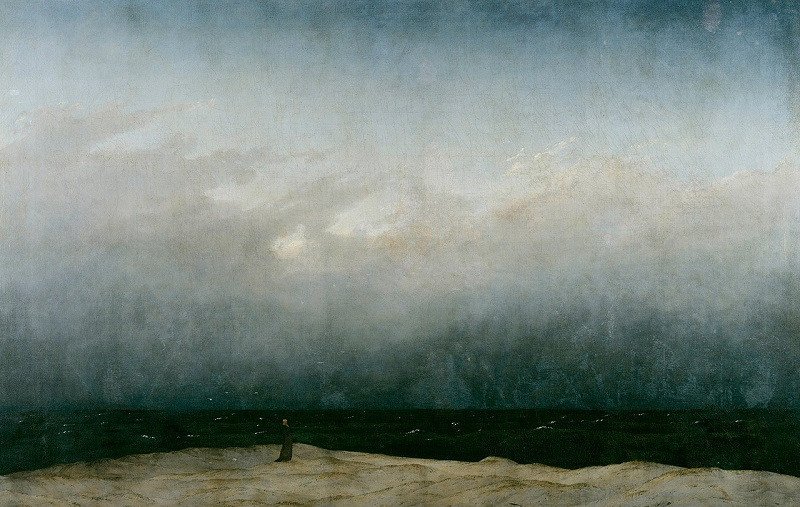
In a similar way to his later painting Traveler contemplating a sea of clouds (1818), Friedrich here confronts the human being with the immensity of nature, before which the character inevitably shrinks. However, there are clear differences between the two paintings: while in the second, the man occupies a large part of the painting, in the first the monk is practically a tiny point that is barely visible between the expansion of the sea and the sky.
Caroline Bommer, muse and fellow lover
Perhaps the much larger size offered by the Sea of Clouds Walker is due to the change that occurs in the painter’s life path.
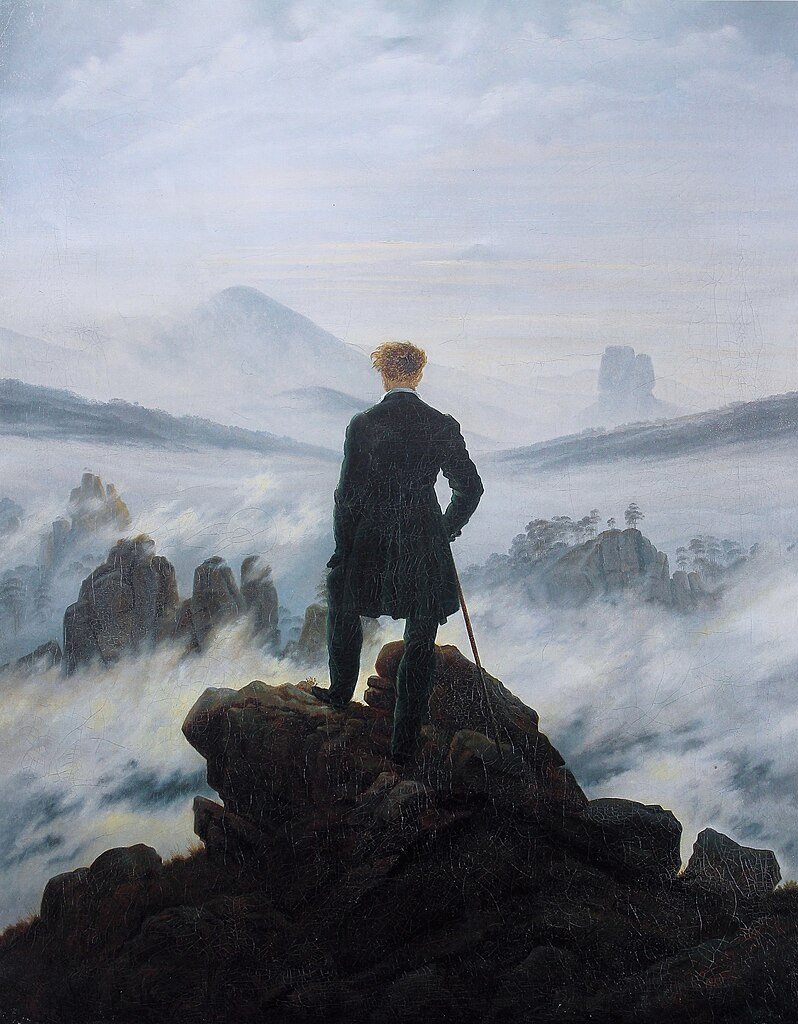
That same year, 1818, he married Caroline Bommer, a cheerful twenty-five-year-old girl (Friedrich was now forty-four) who seemed to shed a placid light on the tormented artist’s existence.
This can be seen if you look at the work of this period, where the canvases become brighter and happier and, above all, human figures begin to proliferate, especially female ones. Critics attribute this change to the painter’s happy union with Caroline that, despite having “disrupted his life” (in a letter Friedrich comments on how his life as a hermit has changed) he has given a positive direction to his existence.
Caroline appears in numerous works by Friedrich from the 1810s and 1820s. We see her, for example, in the famous Woman before the exit (or sunset), made around 1820. The canvas shows Caroline from behind, bathed in warm solar rays, which cannot be discerned if they belong to a dawn or a twilight. Both versions are plausible; A sunrise would make sense if we consider the figure as a kind of praying person from the early Christian era, but the sunset version would correspond perfectly with the idea of death, so constant in Friedrich. The road suddenly cut off in front of the young woman would consolidate this last hypothesis.
Another of Friedrich’s famous works in which his wife appears is Cretaceous rocks on Rügen (1818), inspired precisely by their honeymoon. Three characters (with their backs turned, as is usual in the painter’s work) look towards the void that opens before them, as they find themselves on the edge of a beautiful white cliff. Beyond, the sea unfolds eternal and unchanging, also an important leitmotif in Friedrich’s work as a symbol of life and the journey towards death. The three characters would be Caroline, the artist, and his brother, Christian, who had accompanied them on the trip.
Also at this time Male figures in couples begin to proliferate, reflecting their closest friendships (especially with Carus and Johann Christian Clausen Dahl, a painter of Norwegian origin who became his neighbor in Dresden and enlivened his existence with his friendliness and his evening talks). It is the time of paintings like Two men watching the moon (1819-20), Man and woman contemplating the moon (1824) and Landscape at sunset with two men (1830-35).
Already since the Congress of Vienna (1814-15) and the restoration of the Ancien Regime, Friedrich’s work had become, in some ways, more withdrawn and intimate. After the “luminous” years of his first years of marriage to Caroline, the artist’s character began to sour, and around 1830 he fell into melancholy again. His works no longer interest anyone beyond his circle.
Last years and death
In 1824 he suffered an illness that prevented him from painting in oils for a few years, which did not help to improve his condition. In 1835, an attack of apoplexy left him temporarily without mobility in his arms and legs, which had a huge impact on his work. The illness accentuates his depression and his obsession with death that old friend who has accompanied him since his early childhood, which leads him to create numerous works on cemeteries: Cemetery in the snowfrom 1826, with an open grave in the foreground that connects with the morbid obsession of his own departure; The cemetery gate (1825-1830) and, above all, The entrance to the cemetery (1825), where we can see a couple observing their son’s small grave, over which winged figures fly over that, at first, are barely perceptible.
The same year that the illness arrived in his life, he executed a work that is practically considered his masterpiece, but which during the painter’s lifetime had so little success that it could not even be sold. Is about The Glacial Ocean, whose surprising modernity leaves us completely amazed. Inspired by the shipwreck of a ship in ice, the canvas only reveals the tiny keel of the ship, camouflaged between the enormous solid blocks of ice. You don’t have to be very perceptive to realize the connection that this work maintains with the great torment of Friedrich’s existence: the death of his brother, drowned precisely in the ice. The Glacial Ocean It is, therefore, a kind of living testament, an exorcism with which the painter intends to remove the pain that he has accumulated during his life.
Friedrich’s mental state worsens by leaps and bounds. Some witnesses speak of mistreatment of his wife, whom he accuses of being unfaithful. His friend Shukowski, of whom we have already spoken, visited him a few months before he died, and stated that his condition was pitiful and that the painter began to cry in his presence. Friedrich finally died on May 7, 1840; His work would not be recognized again until almost a century later.

